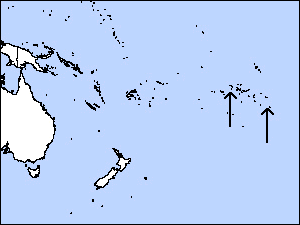
Polynesian Ground-dove
Gallicolumba erythroptera
|
Justification This species qualifies as Critical.
It is very rarely seen and is currently known from just one locality, but
there have been few surveys within its range, and it is assumed to have a
very small population, fragmented into extremely small subpopulations, on
tiny wooded islets. Its extinction from several islands indicates an
overall decline, which is likely to continue owing to predation by rats
and cats, habitat loss and deterioration, and natural disasters such as
hurricanes and severe storms. |
|
|
|
Threats It was formerly caught by local
people for food but it is more likely that the introduction of cats and
rats, particularly black rat Rattus rattus, are the real reasons
for its decline3. Habitat loss is also likely to have
been a factor as the largest atolls with the richest vegetation have been
cleared for coconut plantations4. |
|
Conservation Expeditions in June and October 1999
surveyed eight islands. Follow-up work, including further surveys, rat
eradication and captive breeding, is planned for 2001. |
|
Targets *Conduct further surveys in the
central Tuamotus and Actaeon group, including showing pictures to local
people1,2,5. *Study the remaining wild population on
Tenararo, e.g. feeding and breeding behaviour1,2.
*Protect Tenararo from the introduction of predators (especially R. rattus)
and human disturbance1,2. *Identify suitable islands in
the Actaeon group for translocation, either rat- and cat-free or where
eradication is possible1,2,5. *Increase public awareness
through the local press and school conferences1.
*Establish a captive-breeding population1,2. *Develop a
Recovery Plan5. |
Use Your Browser's Back Button to return to the Previous Page